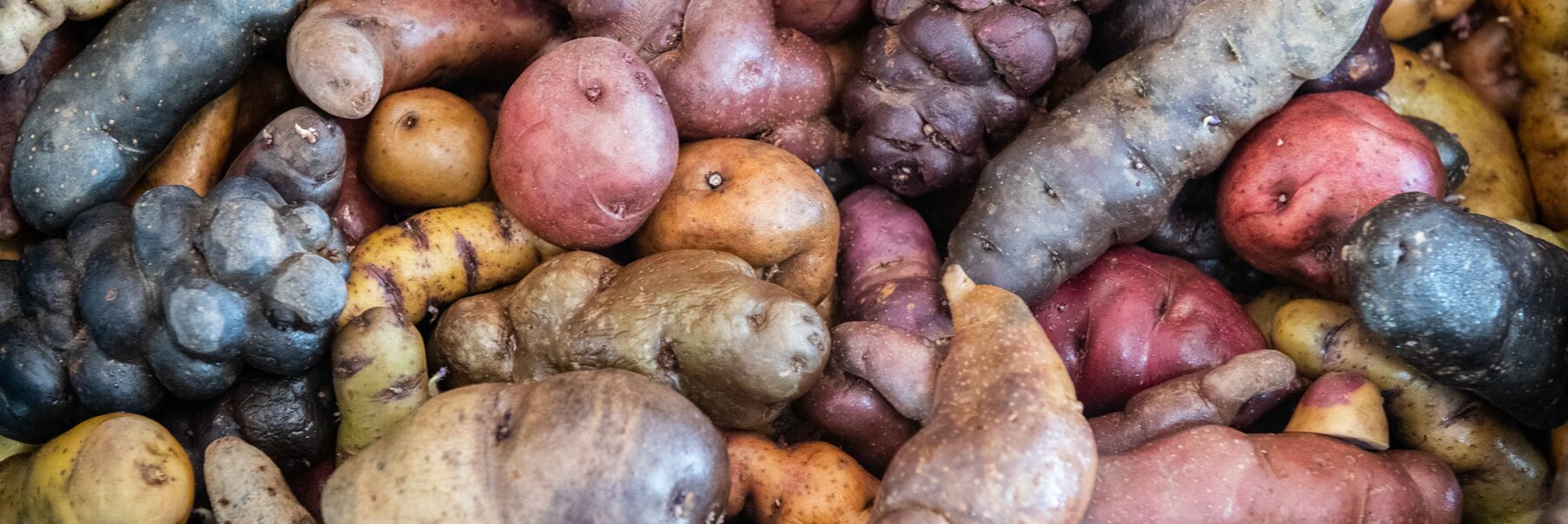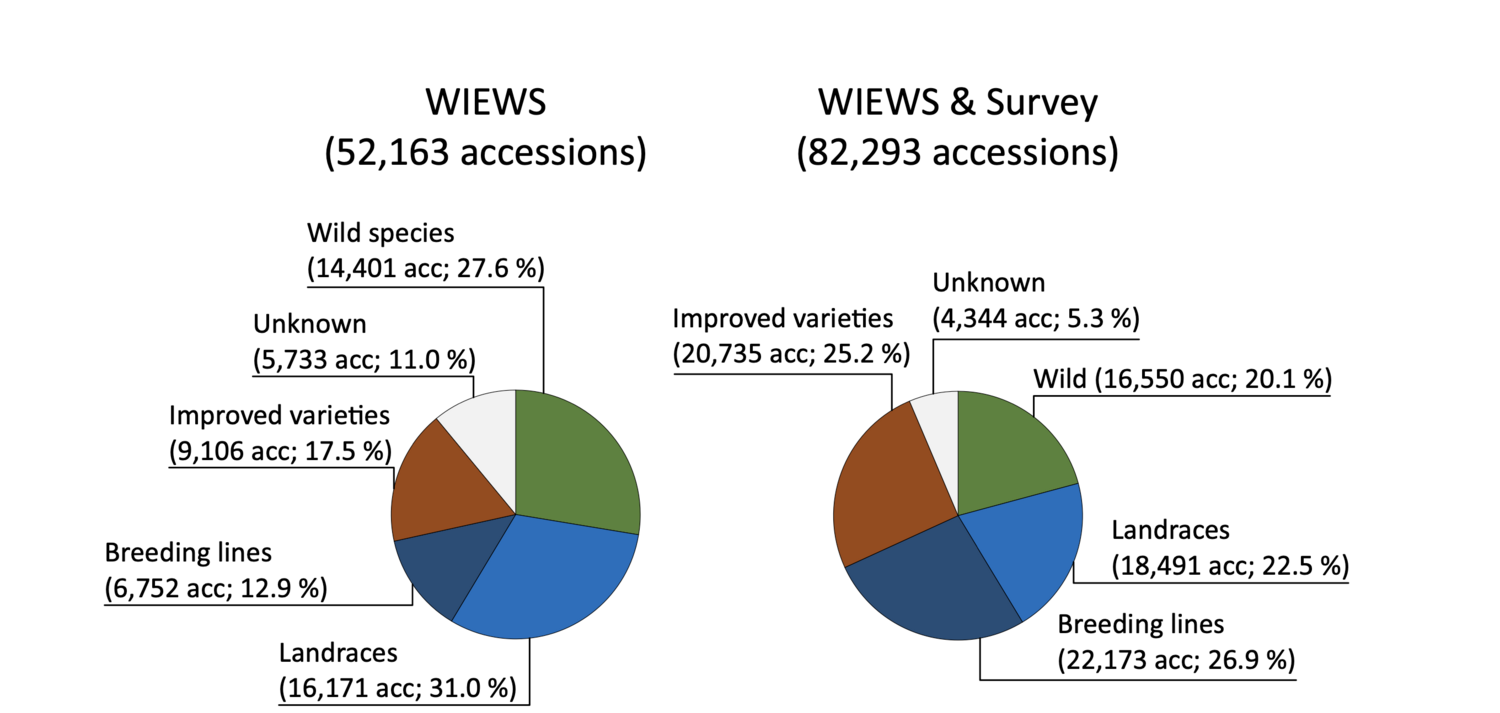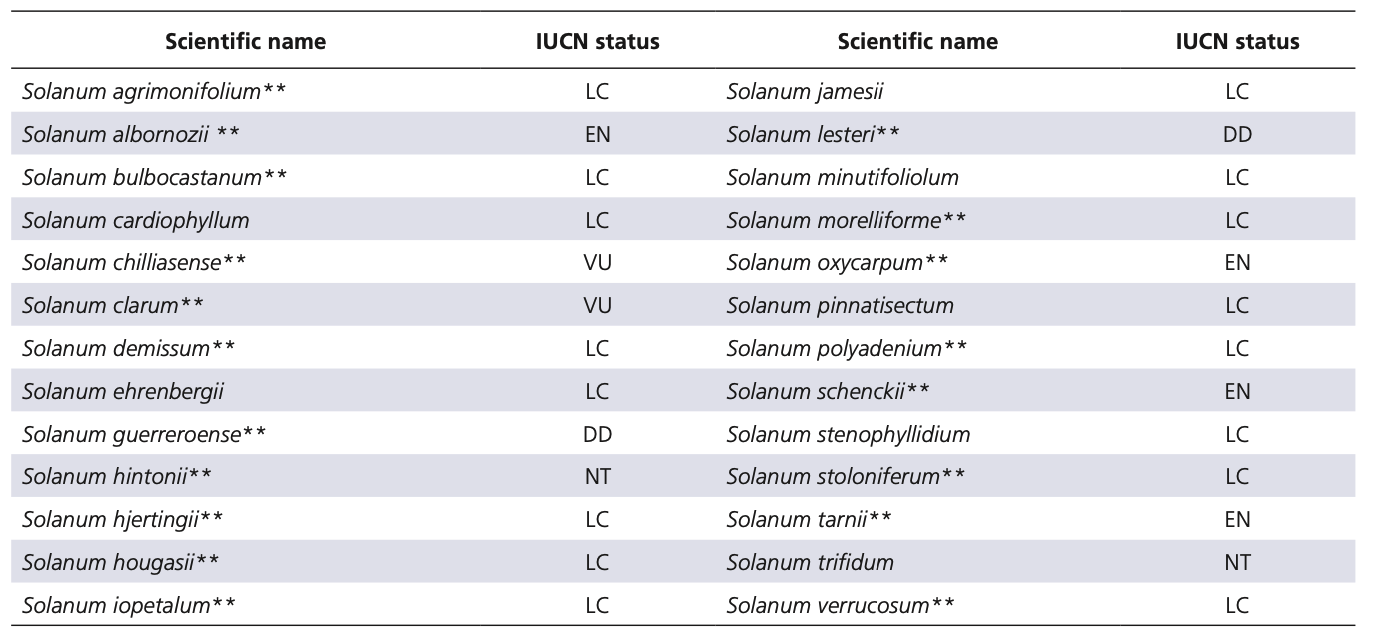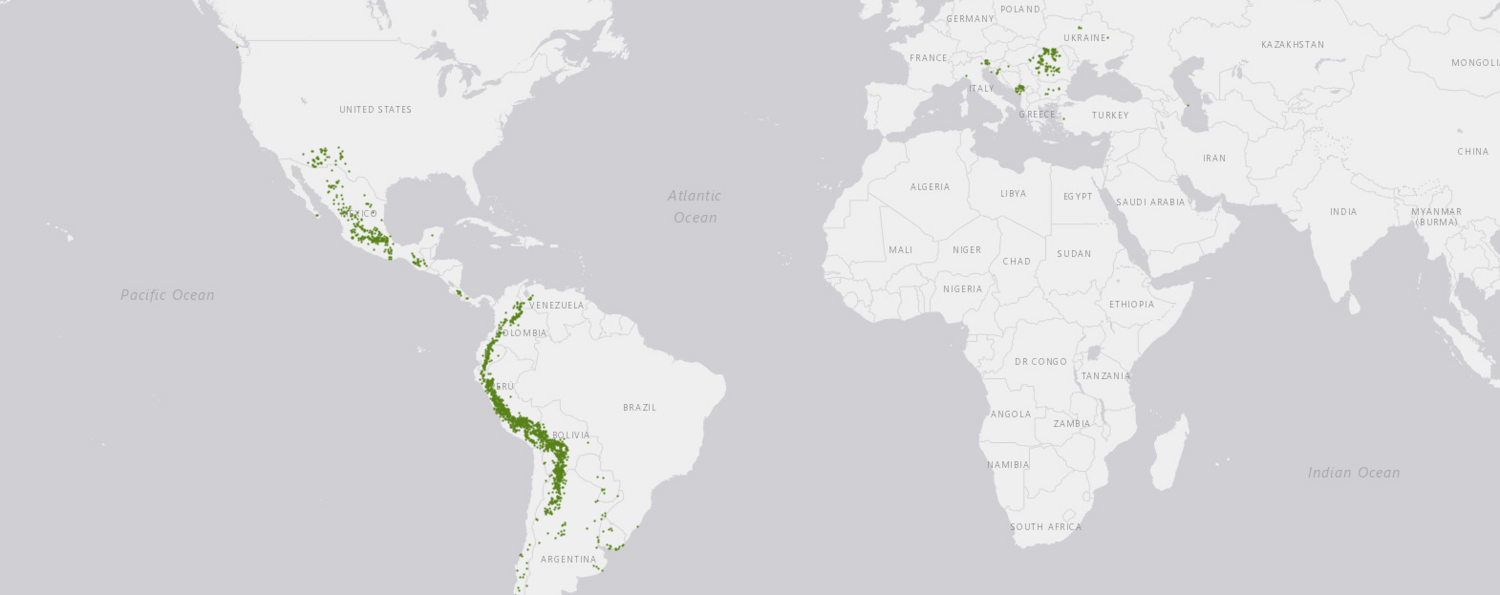Global Strategy for the Conservation of Potato
Global Strategy for the Conservation of Potato was published in 2022 (Global Crop Diversity Trust 2022, DOI: 10.5447/ipk/2022/29). This document, developed with the input of a large number of experts, aims to provide a framework for the efficient conservation and effective use of globally important collections of peanut genetic resources. This webpage provides a summary of some of the its key findings and of the recommendations for priority actions.
Ex situ approaches
The figure shows Potato ex situ storage approaches applied by 32 potato collection holders participating in the survey. Percentages in brackets describes the estimated proportion of the collection maintained under each storage condition. For the backup repositories, the country and percentage of collections located outside the respective institute are indicated in brackets. *Numbers provided by the institution where the backup repository is located.
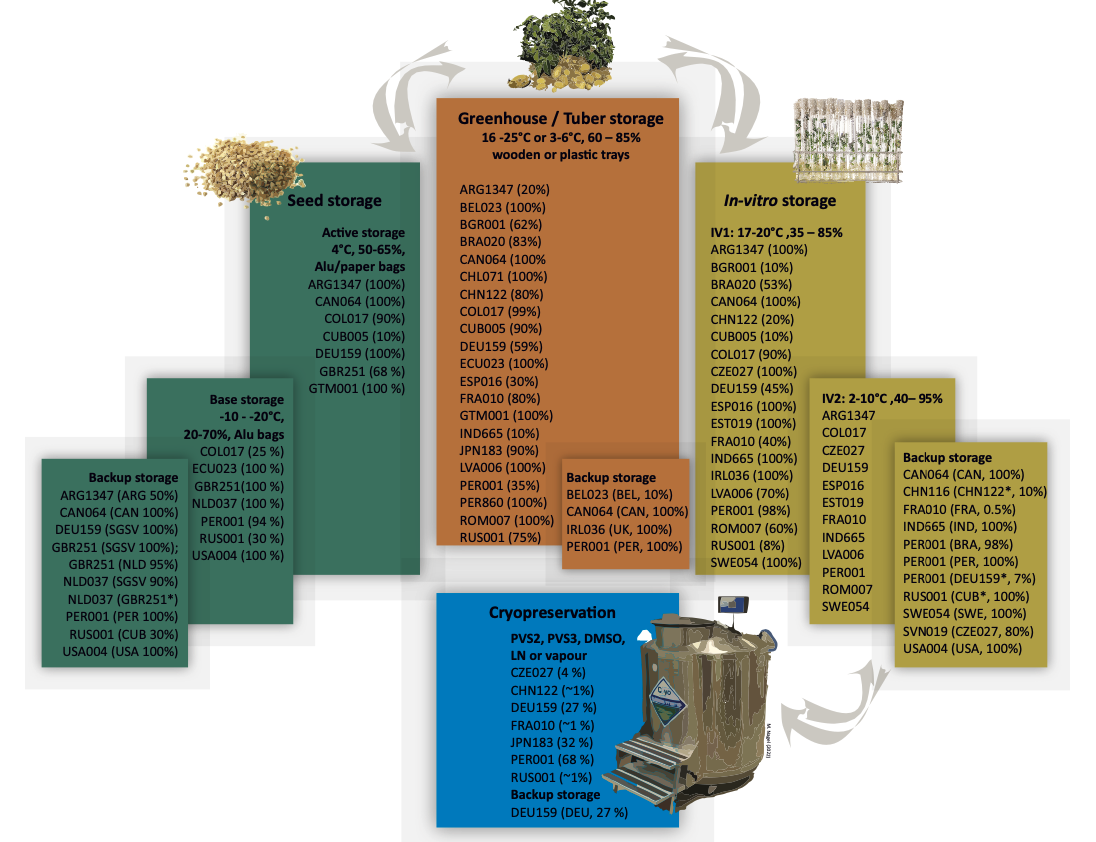
Crop Wild Relatives
The largest wild potato species (applying Spooner et al. (2014)) collections are maintained by CIP (PER001; 95 species), USA (USA004; 79 species), Russia (RUS001; 70 species), Germany (DEU159; 66 species) and the Netherlands (NLD037; 60 species). The species with the largest number of accessions are Solanum brevicaule Bitter (1,896 accessions), Solanum acaule Bitter (1,491 accessions) and Solanum stoloniferum Schltdl. (1,255 accessions).
The table below shows IUCN Red List categories of priority Solanum section Petota crop wild relatives (https://www.iucnredlist.org/, accessed on 21st April 2020). Priority Solanum crop wild relatives according to Vincent et al. (2013) are indicated by **. LC, least concern species; EN, endangered species; NT, near threatened; VU, vulnerable species; DD, data deficient.
Potato germplasm data
Digitalization and availability of passport, characterization and evaluation data in potato germplasm collections. Responses of 32 survey participants.
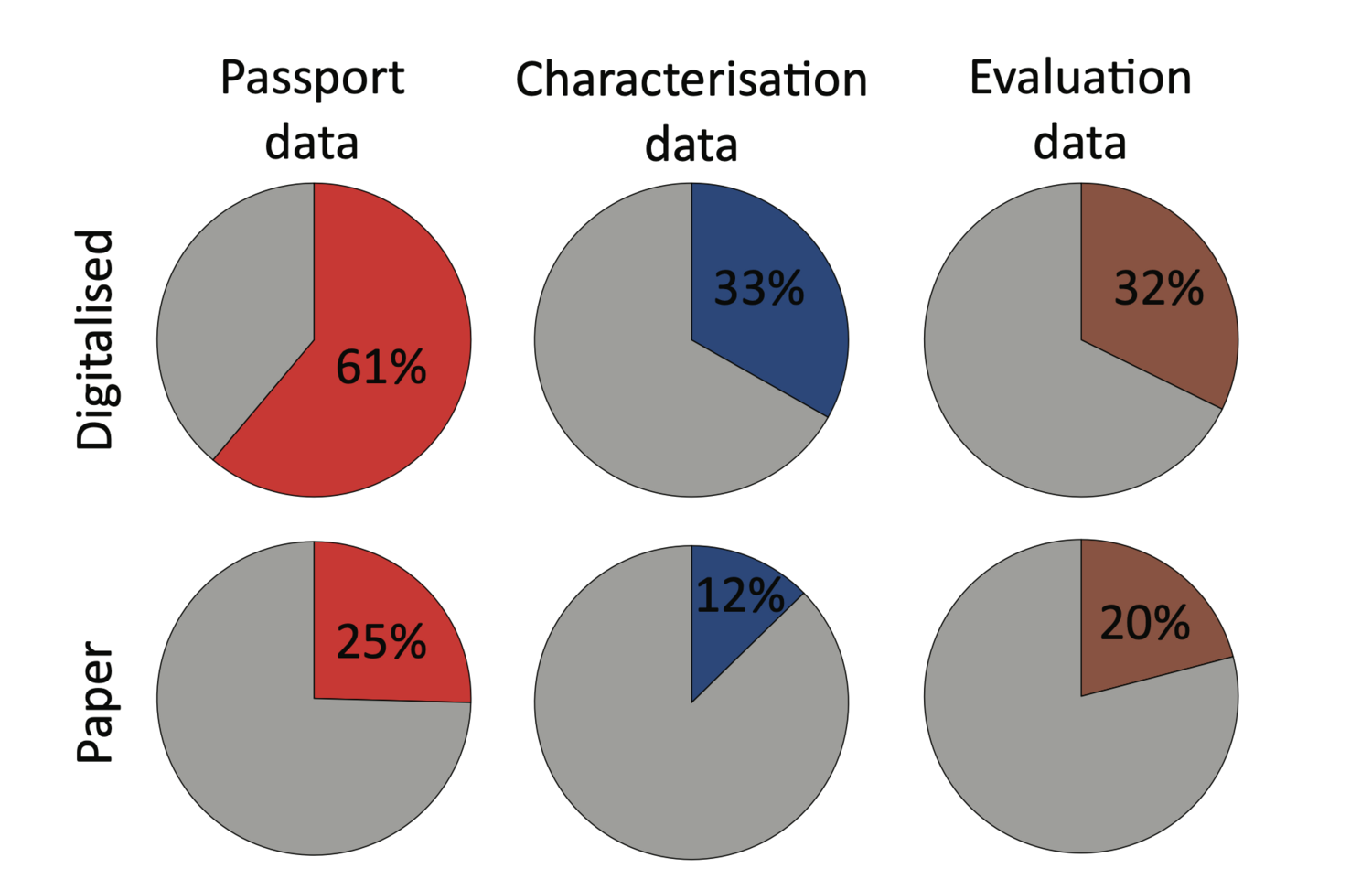
Ex situ holding by biological type
The map shows the number and biological type of potato accessions listed for each institute contributing to the survey. In addition, institutes listed in the World Information and Early Warning System on Plant Genetic Resources for Food and Agriculture (WIEWS) having > 150 accessions are shown.
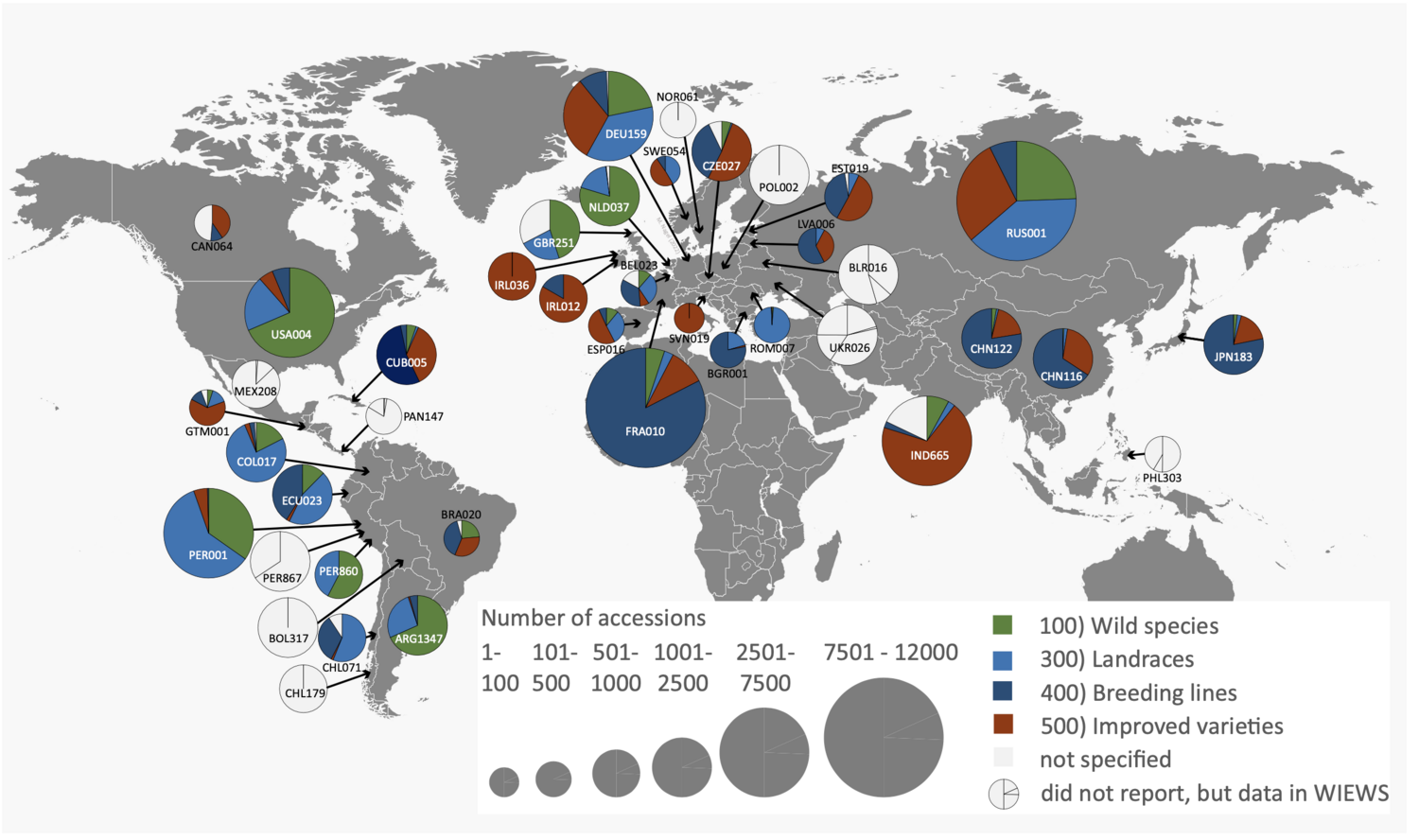
Potato diversity tree
A diversity tree is a stratification of a genepool into groups and subgroups. The concept originated in a paper published by van Treuren et al. (2009) proposing a way to analyze and plan the composition of genebank collections. The diversity tree visualization is interactive (click on the tree to open it).
Recommendations for priority actions
- Comprehensive genotyping of ex situ and in situ collections
- Harmonization of potato taxonomy
- Documentation and monitoring of in situ populations and traditional landraces maintained on farm in American countries
- Capacity building for in situ conservation and improved strategic concepts for on farm conservation
- Collecting missions and linkage between in situ/on farm and ex situ conservation
- Capacity building to maintain high quality ex situ collections, in particular in Latin American countries
- Cryopreservation is needed to ensure long-term survival of potato genetic resources
- Further digitalization, better linkage and visibility of publicly available data for ex situ and in situ conservation management
- Accessibility of collections for breeding and use
- Networking and training
Partners and donor
The development of this crop conservation strategy was funded by the German Federal Ministry of Food and Agriculture (BMEL) as part of the three-year project led by the Crop Trust: Breathing New Life into the Global Crop Conservation Strategies: Providing an Evidence Base for the Global System of Ex Situ Conservation of Crop Diversity. The Crop Trust also cooperated with the Secretariat of The International Treaty on Plant Genetic Resources for Food and Agriculture (ITPGRFA) in the development of this document.




